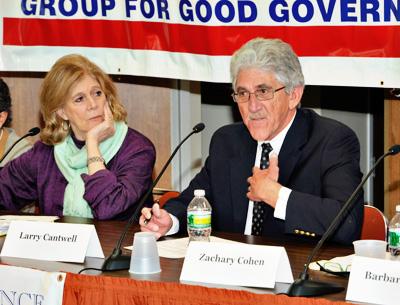Springs School Reports Testing Irregularities to State
Springs School Reports Testing Irregularities to State
The Springs School District has turned over information to the Testing Integrity Unit of the New York State Education Department concerning possible a testing "irregularity" related to a recent state assessment.
A press release the district issued Saturday afternoon said that the allegation of a possible irregularity concerns one Springs staff member and one student -- though it does not identify either individual by name.
For most schools on the East End, state exams were administered during the month of April, though dates varied at each school. The Test Security Unit, based in Albany, is responsible for ensuring the security and integrity of New York State assessments.
“The district immediately turned over this information to its attorney and as per state law, the Testing Integrity Unit of the State Education Department was notified,” read the release. “It is anticipated that the special unit will conduct its own investigation of this matter.”
The release further stated that it is still unknown how long such an investigation would take, though said, “it is not expected to be a significant period of time.”
“We have high expectations for our students and our staff and take pride in the integrity they display each and every day,” said Kathee Burke-Gonzalez, the school board president, in the release. "This allegation is an isolated incident concerning one staff member and one student, but regardless, we have to ensure that state-mandated testing protocols are completely followed."
"Aside from the question about this one particular allegation, we are confident that our recent assessments were delivered appropriately by our professional staff. We will continue to update the community as we learn more about this matter," Ms. Burke-Gonzalez said.
A call for comment to Dominic Mucci, the Springs School superintendent, went unreturned.
It is undetermined whether the recent absences of Eric Casale, the Springs principal, and Katherine Byrnes, the assistant principal, were related to the pending investigation.
On May 2, after reportedly complaining of chest pains, Mr. Casale left the school by ambulance and was taken to Southampton Hospital. Out on sick leave ever since, he has yet to return to his post. Then on Wednesday at a hastily called early morning meeting, the Springs School Board unanimously voted to accept Ms. Byrnes's sudden resignation. She had not been seen at the school since May 1.





